What Do the Recycle Numbers Mean?
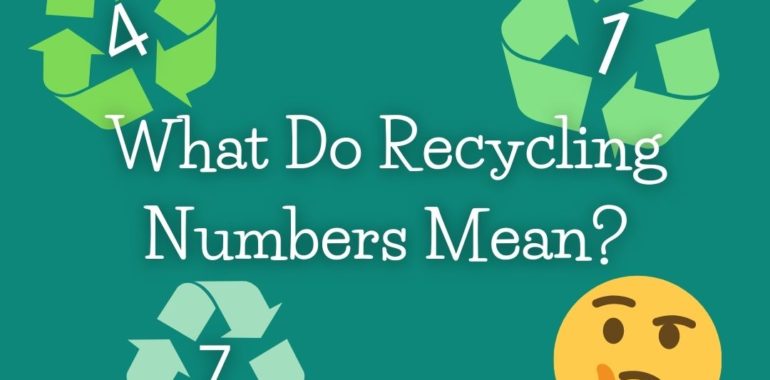
What Do the Recycle Numbers Mean?
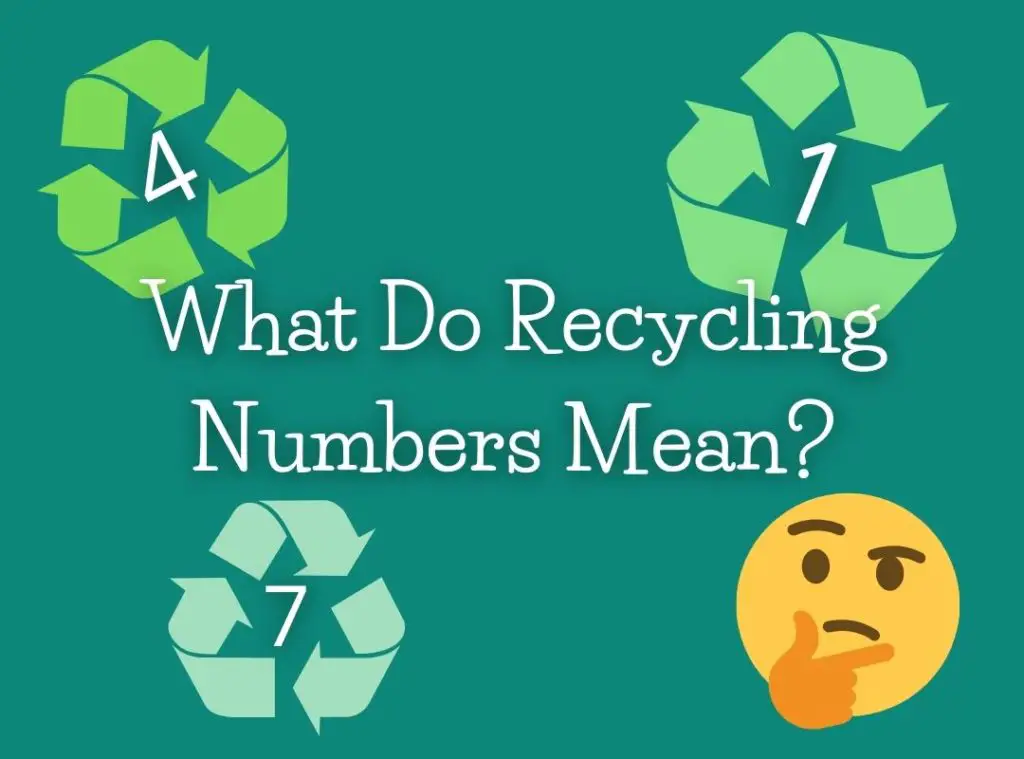
There is a lot of confusion around recycling numbers, what they mean, and which numbers are recyclable. Let’s talk about recycle numbers (or recycling codes) and what they can and can’t tell you about an item’s recyclability.
Understanding Recycle Numbers
You have probably noticed that the recycling numbers only show up on plastic. That’s because each number is a code for a different type of plastic resin (or plastic type). The numbers are mostly there for manufacturers, they are actually not that helpful to consumers for determining whether something is recyclable or not. Your community rules on what is or is not recyclable are the only guidelines you should be concerned with.
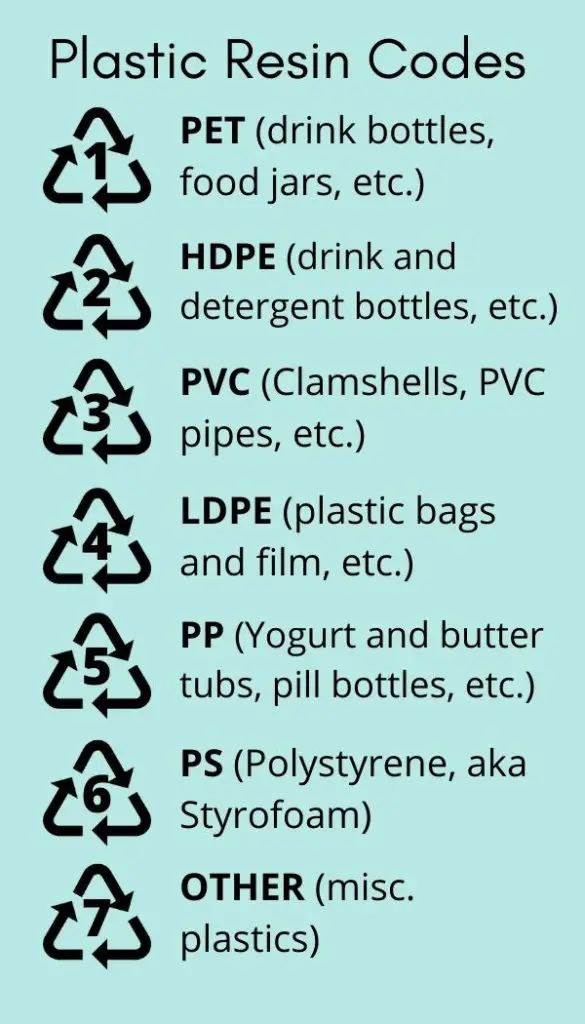
That said, here are what the different plastic resin codes mean:
- #1 – PET (Polyethylene Terephthalate) – You will see this number on a lot of drink bottles and food jars.
- #2 – HDPE (High-Density Polyethylene) – This is also used for drink bottles, detergent bottles, cereal bags and other items.
- #3 – PVC (Polyvinyl Chloride) – Plastic clamshells, PVC pipe, lots of other construction and building applications.
- #4 – LDPE (Low-Density Polyethylene) – Plastic bags, shrink wrap, toys, squeeze bottles and more.
- #5 – PP (Polypropylene) – Butter tubs, yogurt tubs, pill bottles, plastic bottle caps, etc.
- #6 – PS (Polystyrene) – Packing peanuts, foam cups, a.k.a. Styrofoam.
- #7 – Other – Any type of plastic that doesn’t fall into one of the other six categories or is a blend of several types.
General plastic recycling guidelines: Most communities (if they take plastic) will take #1 and #2 plastic for recycling, and some will also take #5. The other types are usually not wanted. But even if a community accepts a certain number, they will often still limit it to certain sizes and shapes only, no “odd” shapes or small plastics, even if they are the “right” number. For instance, bottles and tubs may be okay, but no flat lids or small pill bottles. Always defer to the rules your community sets.
Here’s why it is important to not pay too much attention to the recycle number:
The recycle symbol DOESN’T mean it can be recycled.
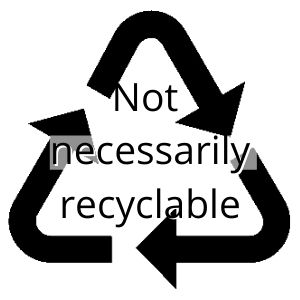
First of all, it’s important to understand that just because an item has that little recycle triangle on it, doesn’t mean it is recyclable, it simply indicates what type of plastic the item is made of. I realize this is confusing, I mean, why put a recycle symbol on it if it may not be recyclable?
Frankly, the plastics industry designed it that way intentionally, to make us think everything is recyclable so that we feel okay about buying their wasteful plastic packaging. I go into more detail on this whole scam in “Why Is Plastic Recycling So Confusing?”
Something is recyclable only if there is a buyer for it.
Many people don’t understand that recycling is a for-profit business. Yes, your community pays to have trash and recycling hauled away, but then the Materials Recovery Facility (MRF, or the place where they sort out those recyclables) is a business and needs to be able to sell those materials to a manufacturer who wants them. The recyclability of a given item comes down to whether your local MRF is able to easily separate out a particular type of plastic from other types and has also been able to find a buyer for that type.
Some types are simply easier to melt down and reuse to make new products than other types. In many cases it’s easier and cheaper to make new items out of virgin plastic than it is to recycle, so finding buyers can be challenging.
For instance, in my city, we can’t recycle #5 plastic (butter and yogurt tubs, etc.), presumably because our trash hauler/MRF doesn’t have a buyer for it. But the next city over uses a different hauler, and they recently started taking #5 plastic again, so they must have found a manufacturer to buy that plastic type.
Size and shape matters.
Most recycling programs will take #1 and #2 plastic, but not ALL #1 and #2 plastic. Why? Because of the way recyclables are sorted at the MRF. Flat plastics, pill bottles and other small plastics will usually fall through the cracks of the screening process and cause headaches for the workers and extra expense spent cleaning that stuff out. So if your recycling program asks you to leave something out, you should leave it out.
Recycling Tips for Specific Plastic Items:
Some plastics have special recycling programs where you can drop off or send specific items and types. For more information on recycling special plastics, check out the following:
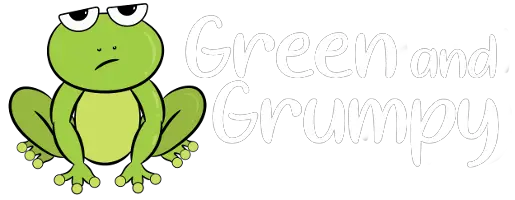
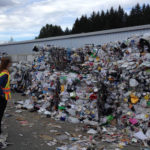
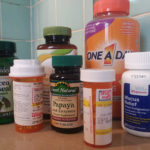
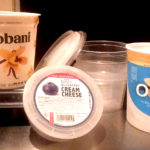
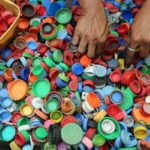
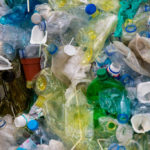
Thank you so much for your sharing your recycling knowledge and for the excellent website. I m learning a lot about the huge challenge that plastics create for our world.
Thank you! It helps keep me motivated if I know that the information on here is helpful to people.